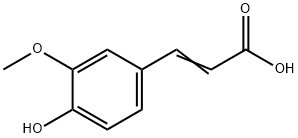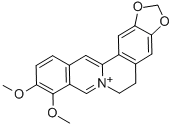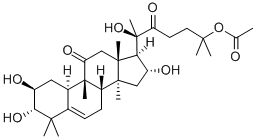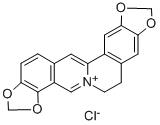13-Methyl-[1,3]dioxolo[4',5':4,5]benzo[1,2-c][1,3]dioxolo[4,5-i]phenanthridin-13-ium , 98% , 2447-54-3
CAS NO.:2447-54-3
Empirical Formula: C20H14NO4+
Molecular Weight: 332.33
MDL number: MFCD00064925
EINECS: 219-503-3
| Pack Size | Price | Stock | Quantity |
| 100mg | RMB398.40 | In Stock |
|
| others | Enquire |
PRODUCT Properties
| Melting point: | 205-215°C |
| Boiling point: | 483.53°C (rough estimate) |
| Density | 1.3463 (rough estimate) |
| refractive index | 1.5180 (estimate) |
| storage temp. | Keep in dark place,Sealed in dry,Room Temperature |
| solubility | Chloroform (Slightly), DMSO (Slightly) |
| form | Solid |
| color | White |
| LogP | -0.653 (est) |
Description and Uses
A naphthoisoquinoline alkaloid, this base occurs in the roots of Chelidonium majus L., Glaucium fimbrilligerum and Sanguinaria canadensis L. The alkaloid was stated by Schmidt, Konig and Tietz to crystallize from EtOH or AcOEt as colourless needles, m.p. 213°C but this low melting point was found to be due to the presence of chelerythrine as an impurity. Once this is removed as the pseudocyanide, the base crystallizes from Et20 and has the above melting point or 242-3°C on slow heating. Obtained from EtOH it forms the alcoholate, m.p. 195-7°C. The hydrochloride forms long, slender, bloodred needles. On distillation with Zn dust, the alkaloid furnishes a-naphthaphenanthridine and the structure given above has been further confirmed by synthesis.
Sanguinarium induces HO-1 expression thus inhibiting MMP-9 and COX-2 expression in TPA-induced breast cancer cells.

![13-Methyl-[1,3]dioxolo[4',5':4,5]benzo[1,2-c][1,3]dioxolo[4,5-i]phenanthridin-13-ium](https://img.chemicalbook.com/CAS/GIF/2447-54-3.gif)



